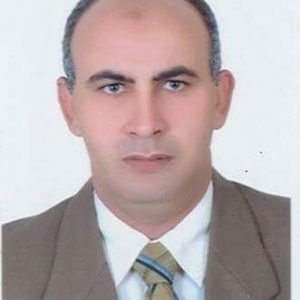Prof. Mahfooz Abdel-Motaleb Hafez
Head of Geoelectric and Geothermal Laboratory
Geoelectric and Geothermal Laboratory
It focuses on many targets like Groundwater exploration and detection the main subsurface reservoirs, Archaeological investigations and detecting the unrevealed objects, Geotechnical and engineering investigations and determination the subsurface cavities,faults, fractures, voids, and impermeable beds, Environmental Risk Assessment, Mineral Explorations and detecting the location of economic minerals, and Geothermal explorations and detecting the main geothermal reservoirs. Geoelectric and geothermal lab. has the latest geophysical techniques (Electric and Electromagnetic techniques) that can achieve these targets and give accurate results.
Members of Geoelectric and Geothermal Laboratory
| Name | Title | Internal phone | Cell Phone | |
|---|---|---|---|---|
| Mahfooz Abdel-Motaleb Hafez | Prof. Head of Laboratory | (+2) 01121040555 | Mahfooz_hafez2001@yahoo.com | |
Abbas Mohamed Abbas | Prof. Head of Department | (+2) 01113309595 | abbas@nriag.sci.eg | |
| Gad Mohamed El-Qady | Prof. Dr. | (+2) 01001547090 | gadosan@nriag.sci.eg | |
Magdy Ahmed Atya | Prof. Dr. | (+2) 01000240157 | magdyattia@nriag.sci.eg | |
| Salah Sheriff Osman | Prof. Dr. | (+2) 01003199792 | sshosman@nriag.sci.eg | |
El-Said Ahmed Al-Sayed Ragab | Prof. Dr. | (+2) 01006532551 | saidragab2001@nriag.sci.eg | |
Sultan Awad Sultan Araffa | Prof. Dr. | (+2) 01090605189 | sultan_awad@nriag.sci.eg | |
| Fathy fawzy Ahmed Shaaban | Prof. Dr. | Shaaban_F@hotmail.com | ||
| Aiman Abdel Latiff Abdel Aziz | Prof. Dr. | (+2) 01117799736 | Aiman-aziz21@gmail.com | |
Usama Saad Abdel-Hamid Massoud | Prof. Dr. | (+2) 01007553062 | usaad2007@nriag.sci.eg | |
Hany Salah Abdel-Azeem Mesbah | Prof. Dr. | (+2) 01117799736 | hmesbah@nriag.sci.eg | |
| Mamdouh M. Mohamed Soliman | Prof. Dr. | (+2) 01000243608 | amsoliman2001@nriag.sci.eg | |
| Ayman Ismail Taha | Prof. Dr. | ayman.ismail@nriag.sci.eg | ||
Mohamed Abdel Zaher | Prof. Dr. | (+2) 01159299090 | moh_zaher@nriag.sci.eg | |
Khamis Kabeel Ali Mansour | Prof. Dr. | (+2) 01158880773 | khamis75@nriag.sci.eg | |
| Mohamed Ahmed Metwaly | Assoc. Prof. | Mmetwaly70@yahoo.com | ||
Ashraf Khozym Salama El-sayed | Assoc. Prof. | ashraf.khozym@nriag.sci.eg | ||
Abdellatif Mohamed Abdellatif Younis | Assoc. Prof. | (+2) 01002060418 | abdellatifyounis@nriag.sci.eg | |
Mohamed Abdel Sabour | Assoc. Prof. | (+2) 01023220509 | mohamed-aldeep@nriag.sci.eg | |
Samah Mohammed Elbarbary | Assoc. Prof. | (+2) 015504337 | samah_elbarbary@nriag.sci.eg | |
Sherin Mohamed Ibrahim | Assoc. Prof. | (+2) 01115440966 | sherinmohamed2001@yahoo.com | |
| Hany Mohammed Shaaban El-Awady | Researcher | (+2) 01003370275 | hanyshaaban@nriag.sci.eg | |
| Mahmoud Gaballah Abdel-Mawgoud | Researcher | mahmoud_gabala@yahoo.com | ||
Mona Mahmoud Mostafa | Researcher | (+2) 01001835364 | Mona002002@hatmail.com | |
Wael Ragab Ali Ebrahim | Researcher | (+2) 01067358595 | wael_ragab2007@nriag.sci.eg | |
| Hamada Salama Abdelhady | Researcher | (+2) 01016165871 | ||
| Noha Ismail Medhat | Researcher | (+2) 01007734674 | noha.ismail@nriag.sci.eg | |
| Diaa Elsayed Hamed Abdallah | Researcher | (+2) 01020313308 | geo_diaa@nriag.sci.eg | |
Ahmed Mahmoud Mohamed | Assistant Researcher | (+2) 01096671737 | ahmed.mahmoud@nriag.sci.eg |
|
| Ibrahim Mohamed khedr Darwish | Assistant Researcher | (+2) 01279019715 | geo_ibrahim_90@yahoo.com | |
Heba Mohamed Mohamed | Researcher Assistant | (+2) 01001853965 | heba_elkosery@nriag.sci.eg |
Electrical Resistivity Surveys
It is used for measuring the electrical resistivity Distributions in the subsurface medium by injecting an electric current through a pair of electrodes into the ground and measuring the potential difference through another pair of electrodes to detect the subsurface geological layers, geotechnical problems, and groundwater aquifers.
Transient ElectroMagnetic (TEM) Technique
TEM method detects underground conducting materials by transmitting electrical pulses along loops of cables laid on the ground surface. It is an inductive method, which utilizes a strong direct current passed through a square loop commonly extended on the ground surface. The flow of this current in the surface loop creates a primary magnetic field, which spreads out into the ground. When the applied current is abruptly terminated, the primary magnetic field starts to decay with time. According to Faraday’s law, the decay of the primary magnetic field with time induces eddy currents that flow outward and downward in the subsurface conductors. The rate of change of these currents and of their respective secondary magnetic field depends on the size, shape and conductivity of the subsurface conductors.
Ground Penetrating Radar (GPR)
It is an electromagnetic technique used for high-resolution detection, mapping and imaging of the subsurface soils and rock conditions. It investigates the subsurface conditions by transmitting radio waves into the ground and recording the response at the ground surface. This system has a capability to investigate the subsurface medium at different depth levels according the used antenna. Each antenna is designed to operate over a range of frequencies. The high frequency is related to shallow investigations and the low frequency is corresponding to deeper investigations. It is strongly used for Archaeological Investigations.
Very Low Frequency Technique
VLF method utilizes Very Low Frequency radio communication signals in the range of 15-30 KHz, to determine electrical properties of near surface soils and shallow bedrock. The technique is valuable especially for mapping steeply dipping structures such as faults, fracture zones and areas of mineralization.

